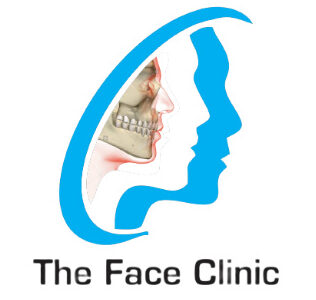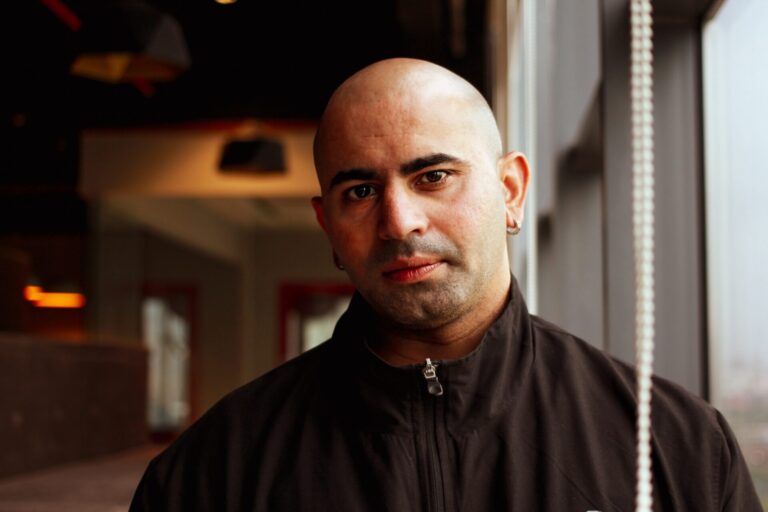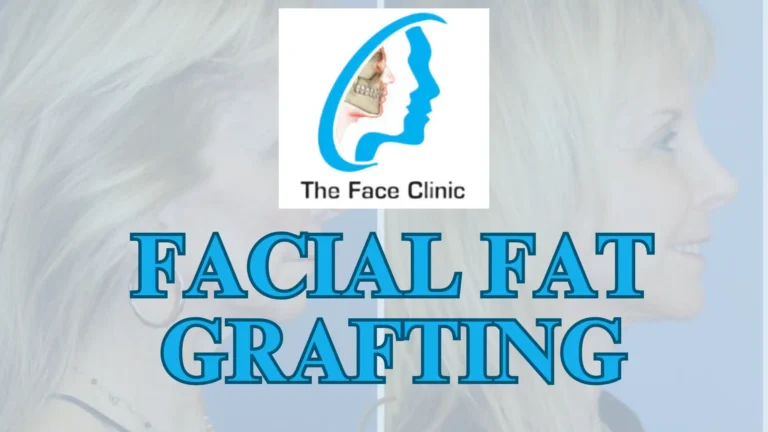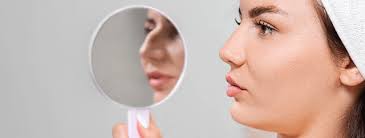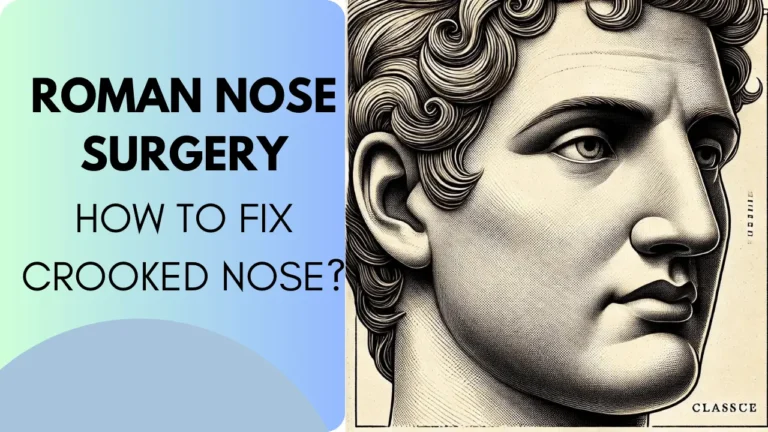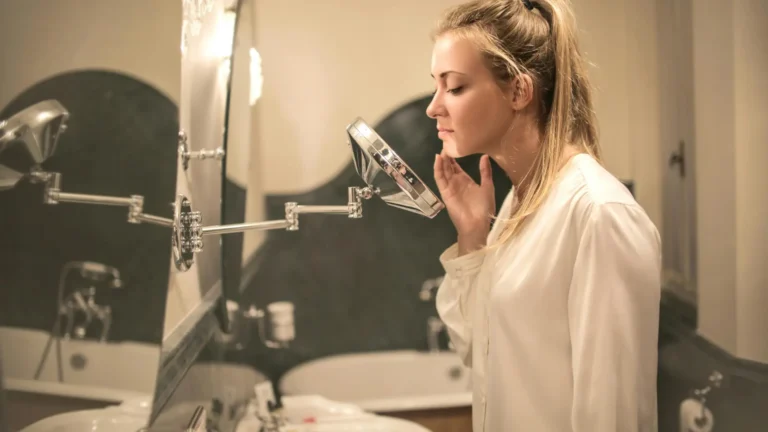Snub noses are defined by their distinctive rounded tips and shorter length compared to other nose types. This particular shape often results in a slightly upturned appearance, giving the nose a youthful and charming look. While many people appreciate the playful aesthetic of their nose, others may feel self-conscious about how it harmonizes with their other facial features.
Facial Characteristics of Snub Nose
- Shape and Structure:
- Snub nose is among the types of noses that typically exhibit a broader base and a bulbous tip. The nasal bridge may appear shorter, leading to a more compact overall appearance. This structure contributes to the nose’s distinctiveness and can significantly influence the face’s proportions.
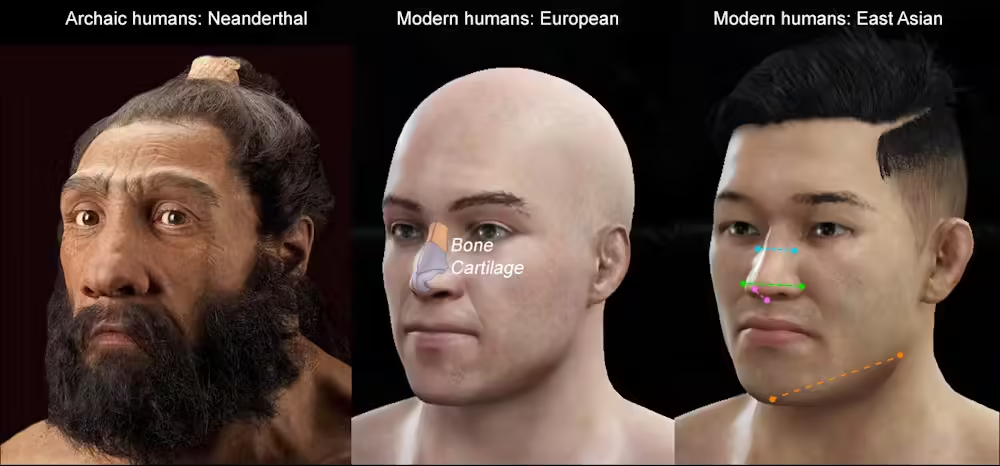
- Facial Balance:
- The perceived harmony of facial features plays a crucial role in overall attractiveness. Individuals with this type of nose may find that the shape can sometimes create a sense of imbalance, particularly if they feel their nose is overly prominent or diminutive in relation to their other features.
- Cultural Perceptions:
- Across different cultures, snub noses can hold various meanings. In some cultures, they are celebrated for their youthful and innocent appearance, while in others, they may be viewed as less desirable. Understanding these cultural nuances can help individuals navigate their feelings about their nasal aesthetics.
- Genetics and Aging:
- Genetic factors often play a significant role in determining nose shape. Snub noses may be hereditary, passed down through family traits. Additionally, as individuals age, changes in skin elasticity and facial fat distribution can affect the appearance of a nose, potentially leading to further concerns about its prominence.
- Emotional and Psychological Impact:
- The way individuals perceive their nose can significantly affect their self-esteem and body image. For some, having this type of nose can lead to feelings of self-consciousness or inadequacy, prompting them to consider cosmetic options. On the other hand, many embrace their noses as unique features that contribute to their identity.
Why Consider Enhancement?
For those who are less than satisfied with their snub noses, enhancement through cosmetic surgery can provide a pathway to achieving the desired look. Cosmetic procedures can address specific concerns, such as:
- Improving Proportions: Adjusting the shape or length of the nose can help create a more balanced facial appearance.
- Refining Features: Many individuals seek to achieve a more defined nasal tip or straightened bridge, contributing to a more aesthetically pleasing profile.
- Boosting Confidence: Cosmetic enhancements can lead to increased self-esteem, helping individuals feel more comfortable in their own skin.
Popular Cosmetic Surgery Options
Rhinoplasty
Overview:
Rhinoplasty, commonly referred to as a nose job, is one of the most sought-after cosmetic surgical procedures worldwide. It focuses on altering the shape and size of the nose to achieve facial harmony and balance. This procedure is particularly popular among individuals with these noses, as it can effectively address various aesthetic concerns, such as an overly rounded tip or a disproportionately short length.
What to Expect:
During rhinoplasty, a qualified plastic surgeon will reshape the nasal structure by manipulating the cartilage and bone. The procedure typically lasts between one to three hours, depending on the complexity of the case. Patients may undergo either an open or closed rhinoplasty, with the former involving external incisions on the columella (the tissue separating the nostrils) for better visibility and access. After surgery, patients can expect some swelling, bruising, and discomfort, which usually subsides within a week. Full results become visible after several weeks as the swelling continues to diminish.
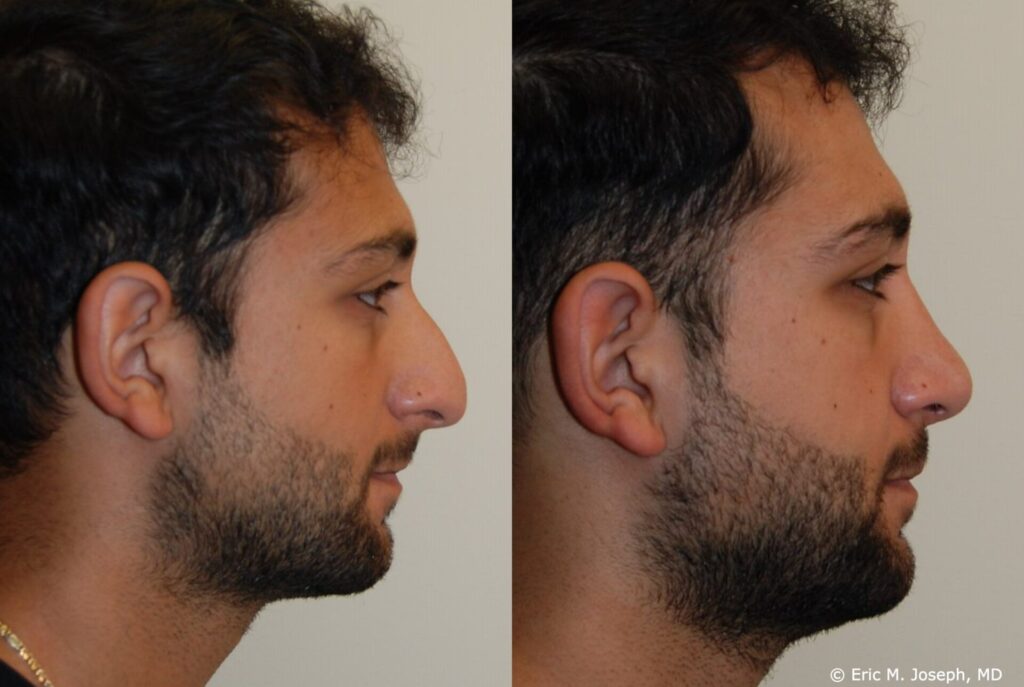

Benefits of Nose Job:
Rhinoplasty( Nose job) offers numerous benefits, including:
- Enhanced Facial Symmetry: By altering the nose’s shape, the overall balance of the face can improve, enhancing aesthetic appeal.
- Functional Improvements: Many patients find that rhinoplasty also addresses functional issues, such as difficulty breathing due to structural nasal problems, thereby improving overall quality of life.
- Boosted Self-Confidence: The emotional impact of aesthetic enhancement can be profound, with many individuals reporting increased self-esteem and a more positive body image following surgery.
Tip Plasty- An Advanced Rhinoplasty Technique
Tip plasty is a specialized form of rhinoplasty that focuses exclusively on reshaping the nasal tip. This option is particularly appealing for individuals with these noses who wish to achieve a more defined or elongated appearance without making significant changes to the entire nasal structure.
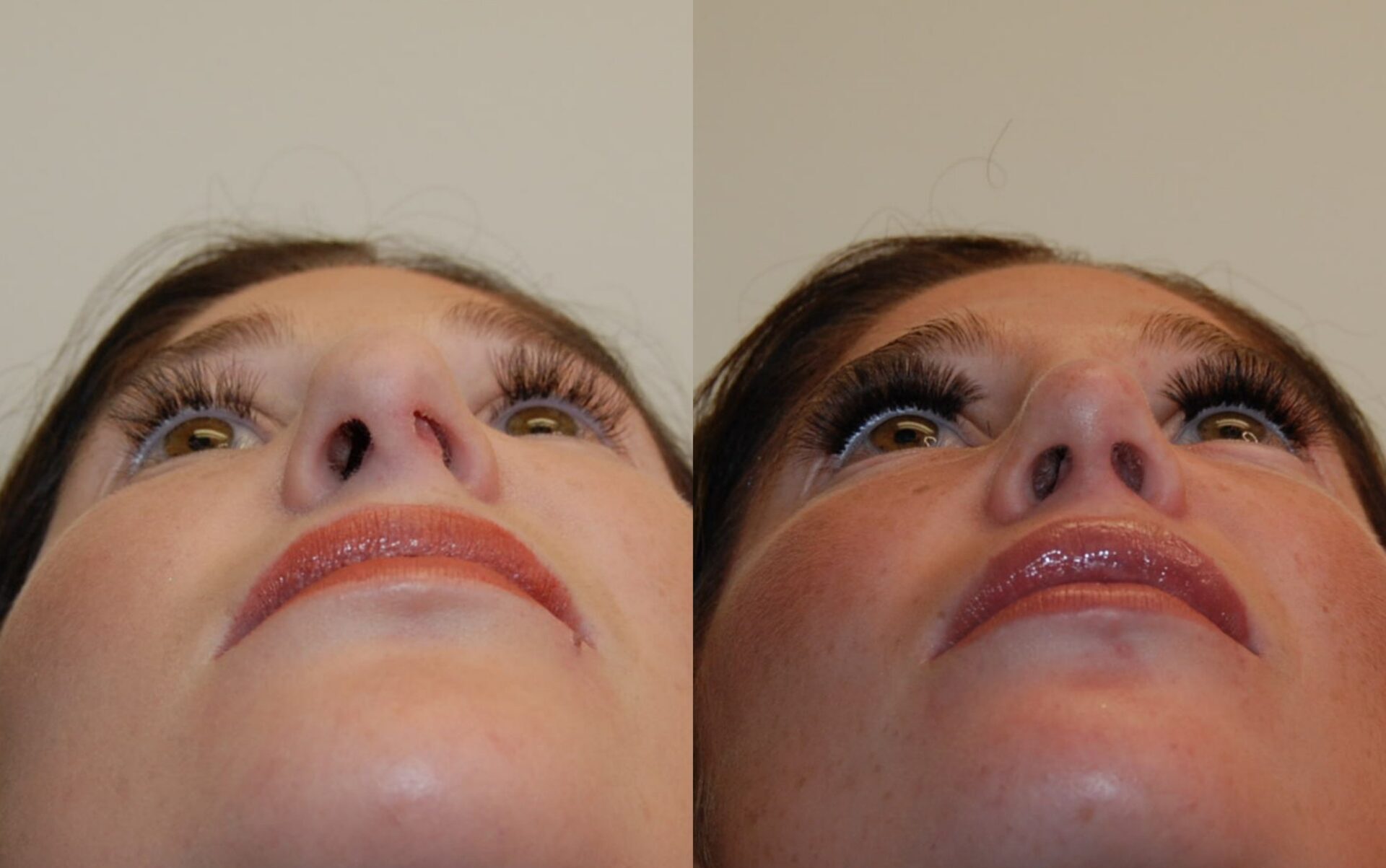
What to Expect:
The procedure involves either the removal of excess cartilage or the addition of grafts to achieve the desired tip shape. Depending on the techniques used, tip plasty can be performed under local anesthesia with sedation or general anesthesia. Recovery time is generally shorter than that of a full rhinoplasty, with most patients returning to normal activities within a week.
Benefits of Tip Plasty:
Tip plasty provides several advantages:
- Refined Appearance: Patients often experience a more aesthetically pleasing and proportionate nasal tip, contributing to a more harmonious facial profile.
- Minimal Downtime: The recovery process tends to be quicker, allowing patients to return to their daily routines sooner while still achieving significant improvements.
Non-Surgical Rhinoplasty
For those who may be hesitant about undergoing surgery, non-surgical rhinoplasty presents a less invasive alternative. Utilizing dermal fillers, this technique enhances the shape of the nose without the need for incisions or anesthesia.
Considerations Before Surgery
Consultation with a Qualified Surgeon
Before pursuing any cosmetic surgery, it is crucial to schedule a comprehensive consultation with a board-certified plastic surgeon or a facial cosmetic specialist experienced in nasal procedures. During this consultation, the surgeon will:
- Assess Your Facial Structure: A thorough evaluation of your facial anatomy, including skin type, bone structure, and existing nasal features, will help the surgeon recommend the most suitable procedure for you.
- Discuss Your Aesthetic Goals: Openly communicate your expectations and desired outcomes. A skilled surgeon will listen to your concerns and offer insights on what can realistically be achieved based on your unique facial characteristics.
- Review Medical History: Disclosing your medical history, including any previous surgeries, allergies, or chronic conditions, is vital for ensuring that the chosen procedure aligns with your overall health and safety.
Realistic Expectations
Setting realistic expectations is a cornerstone of any successful cosmetic surgery journey. Here’s what to keep in mind:
- Potential Outcomes: While cosmetic procedures can significantly enhance your appearance, it’s essential to recognize the inherent limitations. Factors such as your skin elasticity, healing ability, and overall health can impact the final results.
- Visual Aids: Surgeons often use 3D imaging technology or before-and-after photos to illustrate possible results. Understanding what can realistically be achieved will help align your expectations with potential outcomes.
Recovery and Aftercare
Recovery varies significantly between procedures. Understanding the recovery process will help you prepare effectively:
- Rhinoplasty Recovery: This procedure generally requires a longer recovery period, typically ranging from one to two weeks for initial healing. Swelling and bruising are common, with most patients resuming normal activities within two weeks. Full healing and final results may take several months as the swelling continues to subside.
- Tip Plasty and Non-Surgical Options: These procedures usually involve shorter recovery times, with many patients returning to work within a few days. However, it’s essential to follow post-operative care instructions meticulously to ensure optimal healing.
- Aftercare Instructions: Adhering to prescribed aftercare guidelines, such as avoiding strenuous activities, protecting the nose from trauma, and managing swelling through ice packs or prescribed medications, is crucial for successful recovery.
Potential Risks
As with any surgical procedure, understanding the potential risks and complications is paramount:
- Common Risks: These may include infection, excessive scarring, bleeding, or dissatisfaction with aesthetic outcomes. Surgeons typically provide information on how to minimize these risks, such as pre-surgery assessments and following aftercare instructions.
- Specific Concerns: For rhinoplasty, additional risks may involve breathing difficulties or alterations in nasal sensation. It’s essential to discuss these concerns openly with your surgeon to ensure you are fully informed before making your decision.
- Informed Consent: A reputable surgeon will take the time to explain these risks thoroughly and obtain informed consent, ensuring that you feel comfortable and knowledgeable about the procedure.
Take Home Message
Cosmetic surgery options for snub noses, including rhinoplasty, tip plasty, and non-surgical rhinoplasty, present various pathways for enhancing nasal aesthetics.
At The Face Clinic, we prioritize patient education and individualized care, guiding you through every step of your surgical journey to ensure safety and satisfaction. If you are considering a cosmetic procedure to address your nose, schedule a consultation with our experienced team to explore your options. We are committed to helping you achieve your desired look while empowering you with the knowledge necessary for informed decision-making.
